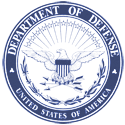Rescinded
This policy memo has been rescinded by DSCA 09-22.
 | DEFENSE SECURITY COOPERATION AGENCY | 12/1/2008 |
MEMORANDUM FOR :
SEE DISTRIBUTION
SUBJECT :
Transportation Charges for Foreign Military Sales (FMS) and FMS-Like Case Shipments (DSCA Policy 08-39)
Paragraph C7.18.1 and Table C9.T.2. of the Security Assistance Management Manual (SAMM) provide guidance on how to price transportation provided on FMS and FMS-like cases. The normal practice is to use Delivery Term Codes (DTCs) to compute an estimated amount for these costs on Letter of Offer and Acceptance (LOA) documents. This estimated amount is collected into the Transportation Account as articles are delivery reported. DTC rates use percentages based on the amount of transportation provided (e.g., port-to-port; depot-to-in-country destination, etc.) and the rate area where articles are being delivered. Unfortunately, the DTC percentage rates have not been updated in many years. Rising fuel prices and other factors are negatively impacting our collections for transportation - necessitating a review of these rates with the likely result of an increase in the DTC percentage rates. We are targeting 27 Feb 09 for completion of our review/analysis and publication of any changes to these rates.
While we are undergoing this review and analysis, we must ensure existing FMS and FMS-like cases are collecting enough funds to cover transportation costs being incurred and billed to the Transportation Account. The following interim guidance should be used until further notice:
(a) Each Implementing Agency should identify cases that have the potential for undercollecting sufficient funds to cover related transportation billings. Given the number of active lines, priority should be given to high dollar value lines and those with expiring funds such as 1206 cases. DSCA will assist in coordinating the availability/visibility of associated transportation bills for previous shipments that may provide useful information in determining if the estimated transportation costs (ordered accessorials) for future shipments are realistic. Examples of activities which could cause actual transportation charges to exceed estimates include, but are not limited to: heavy use of military air transportation vice ground or sea transportation, inclusion of transportation-related costs above those covered by the DTC, assessment of storage fees for shipments not delivered in a timely manner, etc. If it is determined, that the difference between the DTC-computed costs and the actual charges incurred or anticipated are greater or less than 5% or $50,000 (whichever is less), two actions are required. First, a modification to the case must be processed to reflect the revised value of estimated actual transportation costs. This modification may include adding a new line to the case for the actual charges or a computation of an actual amount in the below-the-line charges. The modification must include a note explaining the basis and amount of change in estimated transportation costs. Secondly, to ensure that sufficient collections have been made to cover the actual transportation costs already paid from the transportation account, NX transactions must be submitted to DIFS to increase the value of delivered accessorial costs. This policy will be in effect until the rates can be changed to more accurately reflect estimated transportation charges on prospective case lines.
(b) If transportation-related costs are incurred that are not appropriate for below-the-line (not covered by the DTC), these costs must be charged as above-the-line costs and billed appropriately. Examples of these include costs related to RFID tagging and tracking, containers not being returned to the transportation provider, etc. These costs are not included as part of the DTC percentage rate and must not be billed to the Transportation Account.
(c) For cases where above-the-line transportation is included, such as Special Assignment Airlift Mission (SAAM) flights, the costs assessed against these lines must be reviewed to ensure the line value is sufficient. As with all lines items on FMS and FMS-like cases, if expenditures deviate from those estimated on the line, a modification must be done to reflect the actual costs. Above-the-line transportation costs must not be billed to the Transportation Account.
Implementing Agencies must ensure that NA performance transactions reporting physical delivery of materiel include proper coding regarding transportation. Transportation Bill Codes (TBCs) should be used when appropriate to ensure correct calculations can be made. When NA transactions are coded so that transportation is not charged based on the DTC percentage, NX transactions must be used to input the actual transportation costs incurred, by generic code
Once the rate changes are finalized, we will update the SAMM to reflect the new rates and include additional information regarding assessment of actual charges. We thank you in advance for assisting us in our efforts to establish more realistic estimates of below-the-line transportation charges so that collections into the transportation account are more consistent with actual charges. If you have any questions, please contact Rita Chico at (703) 602-3632 or e-mail at rita.chico@dsca.mil.
Ann Cataldo
Principal Director
Business Operations
